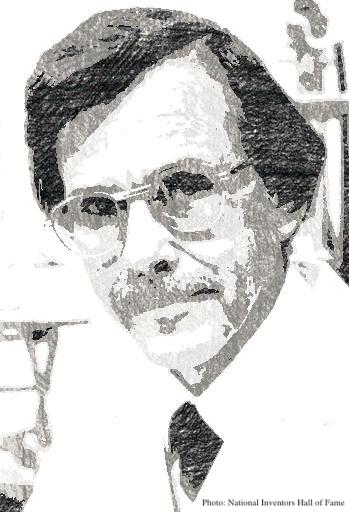John Franz
In 1970, organic chemist John E. Franz developed a new class of herbicide that allows for the destruction of difficult perennial and annual weeds without danger to nearby vegetation, soil, or animals, even bacteria. The glyphosate molecule, which he discovered and studied to develop its properties, has become the basis for the world’s most widely used type of herbicide and has helped change the face of agriculture by enabling the development of no-till farming.
Born on December 21, 1929 in Springfield, Illinois, Franz earned a BS in chemistry from the University of Illinois in 1951, followed by a PhD in Organic Chemistry from the University of Minnesota in 1955. He began working that year for the Monsanto Company’s Organic Division in St. Louis, Missouri.
In 1970, as a Science Fellow at Monsanto, he began working on developing a systemic product to eliminate annual and perennial weeds. He zeroed in on the glyphosate molecule, which inhibits an amino acid that is primarily found in plants and absent from most other living organisms. Glyphosate is absorbed through a plant’s leaves and has the ability to translocate rapidly to its roots, rhizomes, and meristems. However, it is non-toxic to humans, other mammals, birds, fish, insects, and bacteria.
Other products pre-existed that were widely used but which had a variety of serious drawbacks; namely, they were volatile, damaging to adjacent lands, and soil leaching. Glyphosate, however, binds tightly to the soil and will not harm nearby vegetation. As a result, there is an extremely low potential for contamination of groundwater. Once in the soil, it is broken down into natural byproducts by microorganisms, which are left unharmed. Weeds and grass will generally re-emerge within one to two months after use.
Monsanto began developing glyphosate for commercialization in 1973 and, in 1974, introduced it to the worldwide market under numerous trademarks, including the well-known brand Roundup®. The company markets more than 90 brands of glyphosate-based herbicides, accounting for billions of dollars in sales in more than 130 countries. According to Monsanto, it is the most-sold agrichemical of all time.
Glyphosate is known to be effective in eliminating more than 125 kinds of weeds and is used on at least 100 types of crops around the world. The product has been used to restore fields to productivity and maintain them free of weed infestations, from roadside areas to golf courses, in nurseries, and on farms, where it has saved millions of acres of prime soil from erosion. It helped foster the development of no-till farming, allowing farmers to avoid the expensive and soil-destructive cultivation of fields before planting. In the United States alone, some 85 to 90 million pounds of glyphosate-based herbicide is used annually for agricultural purposes. Additionally, because it is considered ecologically safe, glyphosate has been used to help fragile ecosystems from Oregon to the Galapagos Islands.
Franz has been recognized with numerous prestigious honors and awards for his work, including the National Medal of Technology, awarded in 1987 by then-President Ronald Reagan. He was also the 1989 recipient of the Carothers Award and the 1990 recipient of the Perkin Medal for achievements in applied chemistry. In 1981, Monsanto recognized him with its highest technical honor, the J.F. Queenie Award. He holds some 70 U.S. and 800 foreign patents and has more than 40 papers to his credit. He spent his entire career with Monsanto, retiring as a Distinguished Fellow, Synthesis, in 1991. In 2007, Franz was inducted into the Inventors’ Hall of Fame. Shortly after that, Monsanto announced a new scholarship, the Franz Innovation Award Scholarship, which is awarded each year to a student in organic chemistry at the University of Minnesota.


